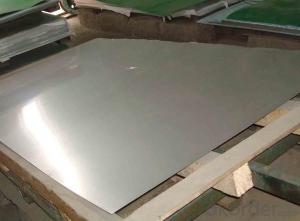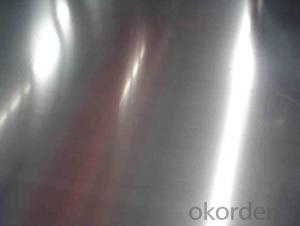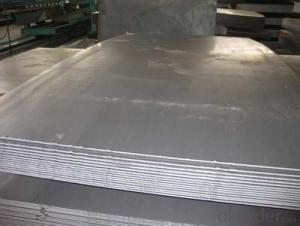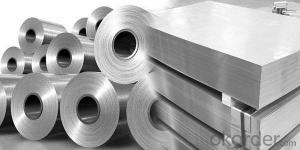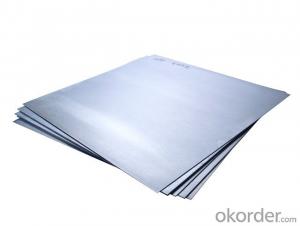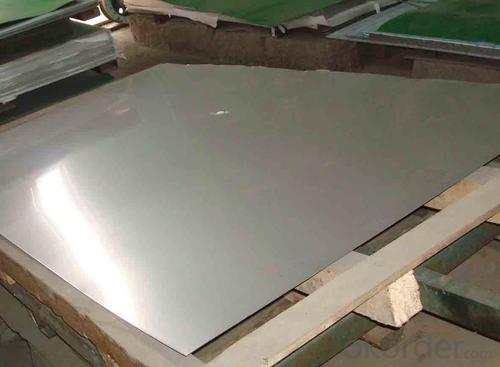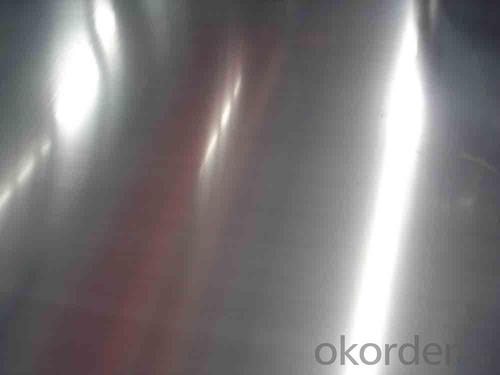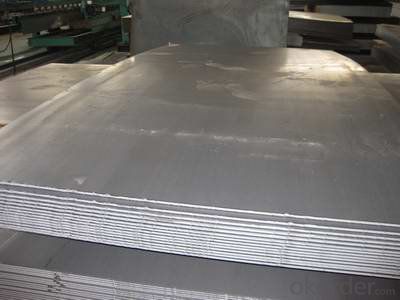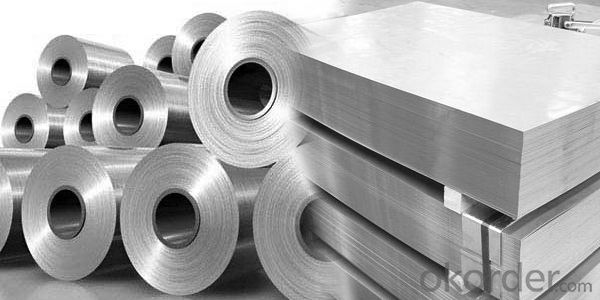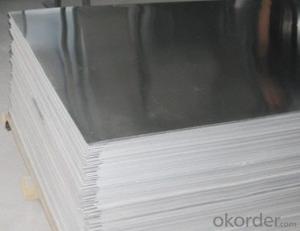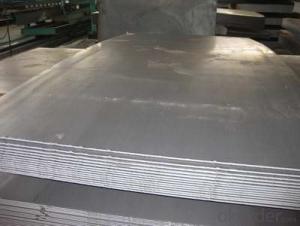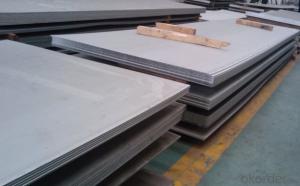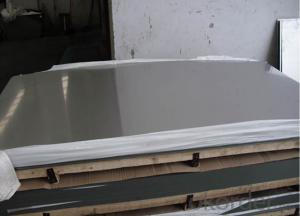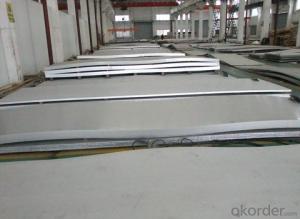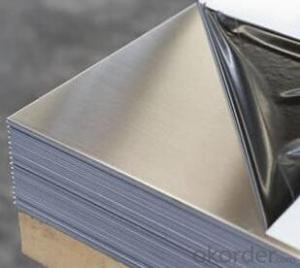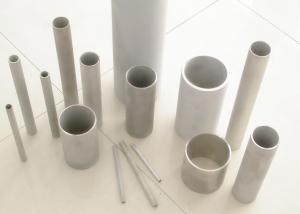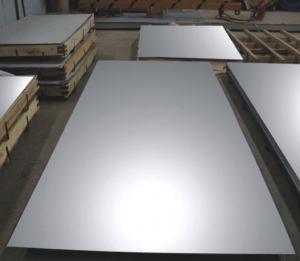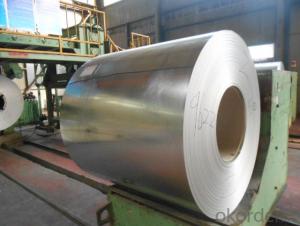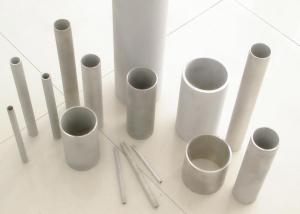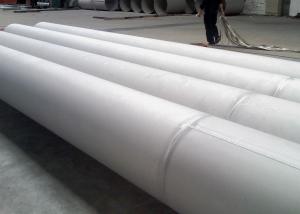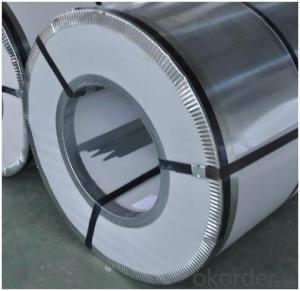Stainless Steel Sheet 4x8 with No.4 Surface Treatment
- Loading Port:
- Shanghai
- Payment Terms:
- TT OR LC
- Min Order Qty:
- 500 m.t.
- Supply Capability:
- 5000000 m.t./month
OKorder Service Pledge
OKorder Financial Service
You Might Also Like
Hot sale stainless steel sheet 201/202/304/304l/310S/309S/316L/316Ti/316/321/410/420/430/444/443/409L,and 904L.
Description of Stainless Steel Sheet:
Description | steel sheet,hot rolled steel sheet,cold rolled steel sheet, steel sheet,sheet,steel plate |
Standard | ASME, ASTM, EN ,BS,GB,DIN, JIS etc |
Application | Steel sheet applies to construction field, ships building industry, petroleum & chemical industries, war and electricity industries, food processing and medical industry, boiler heat exchanger, machinery and hardware fields. |
Packaging | Standard export sea-worthy packing |
Delivery time | 10-30 days |
Quality | No.1 |
Productivity | 500 tons/Day |
Note | Our company has cooperative relation between the domestic agents. Stainless steel sheet can be made accordingto the customers requirements. Fasten delivery. Quality assured. |
Contacts | If you have any question,please feel free contact me. |
Stainless steel sheet surface finish characteristics
Surface finish | Characteristics and application |
2B | The surface brightness and flatness of no2B is better than no2D. then through a special surface treatment to improve its mechanical properties,No2B could nearly satisfy comprehensive uses. |
No.1 | Polished with abrasive belt of grit#100-#200, have better brightness with discontinuous coarse stria, used as inner and external ornaments for building, electrical appliances and kitchen utensils etc. |
No.4 | Polished with abrasive belt of grit #150-#180,have better brightness with discontinuous coarse stria, but thinner than No3, are used as bathtub buildings inner and external ornaments electrical appliances kitchen utensils and food processing equipment etc. |
HL | Polished with abrasive belt of grit #150-#320 on the NO.4 finish and has continuous streaks, mainly used as buildings ornaments elevators, door of building, frontal plate etc. |
BA | Cold rolled, bright annealed and skin-passed, the product have excellent brightness and good reflexivity like mirror, kitchen apparatus, ornament etc. |
8K | The product have excellent brightness and prefer reflexivity can to be the mirror. |
Main Features of stainless steel sheet :
•Escalator, Elevator, Doors
•Furniture
•Production tools, Kitchen appliances, freezers, cold rooms
•Auto Parts
•Machinery and Packaging
•Equipment and Medical devices
•Transport system
Product Details:
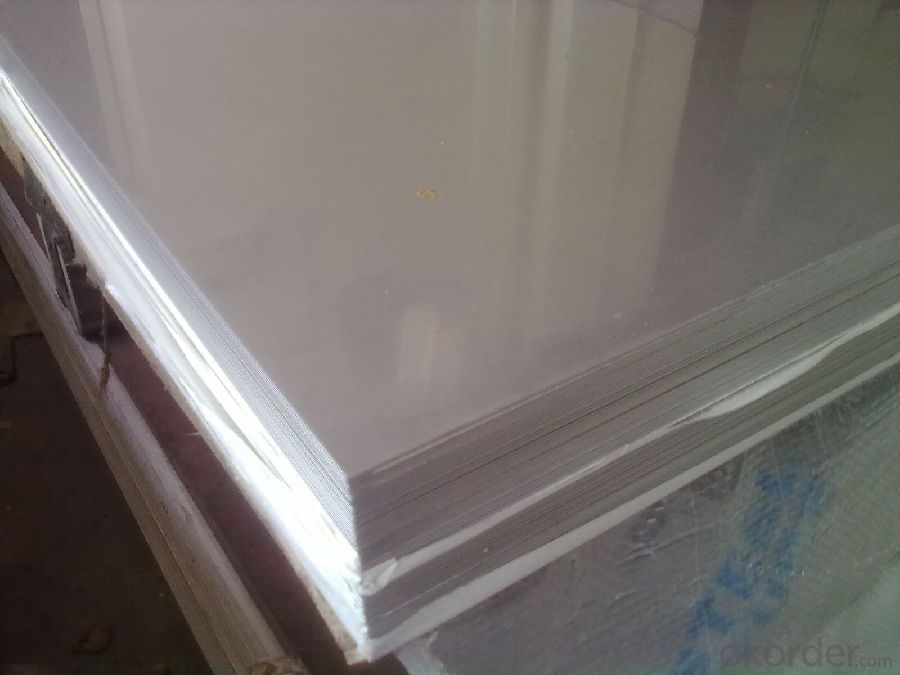
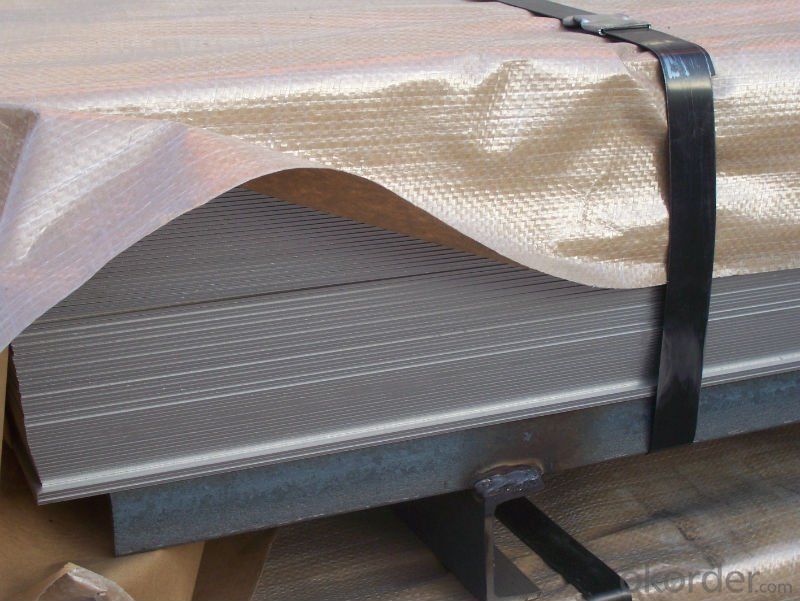
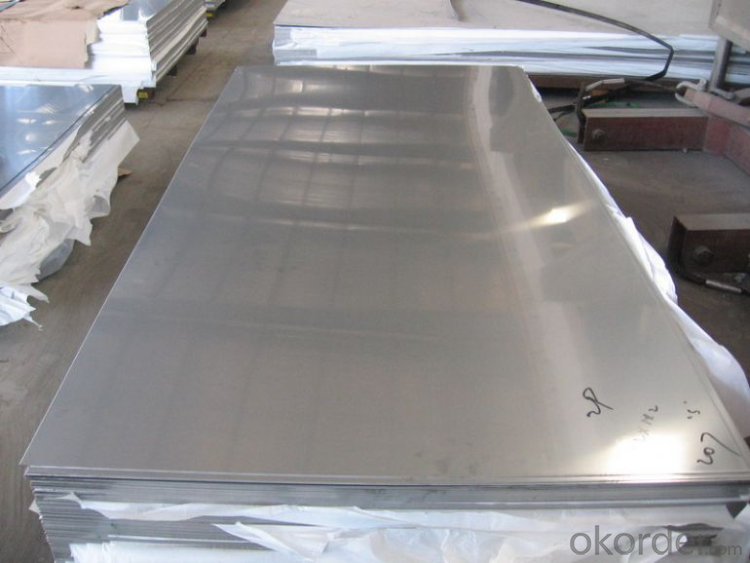
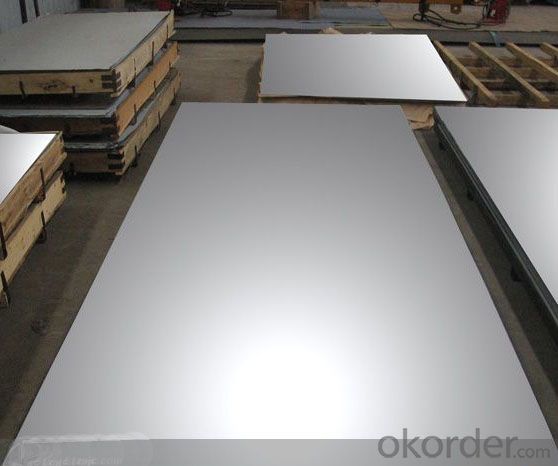
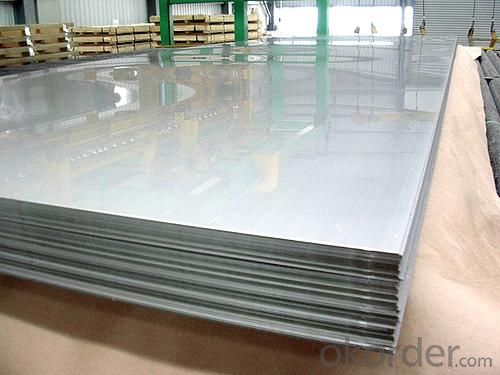
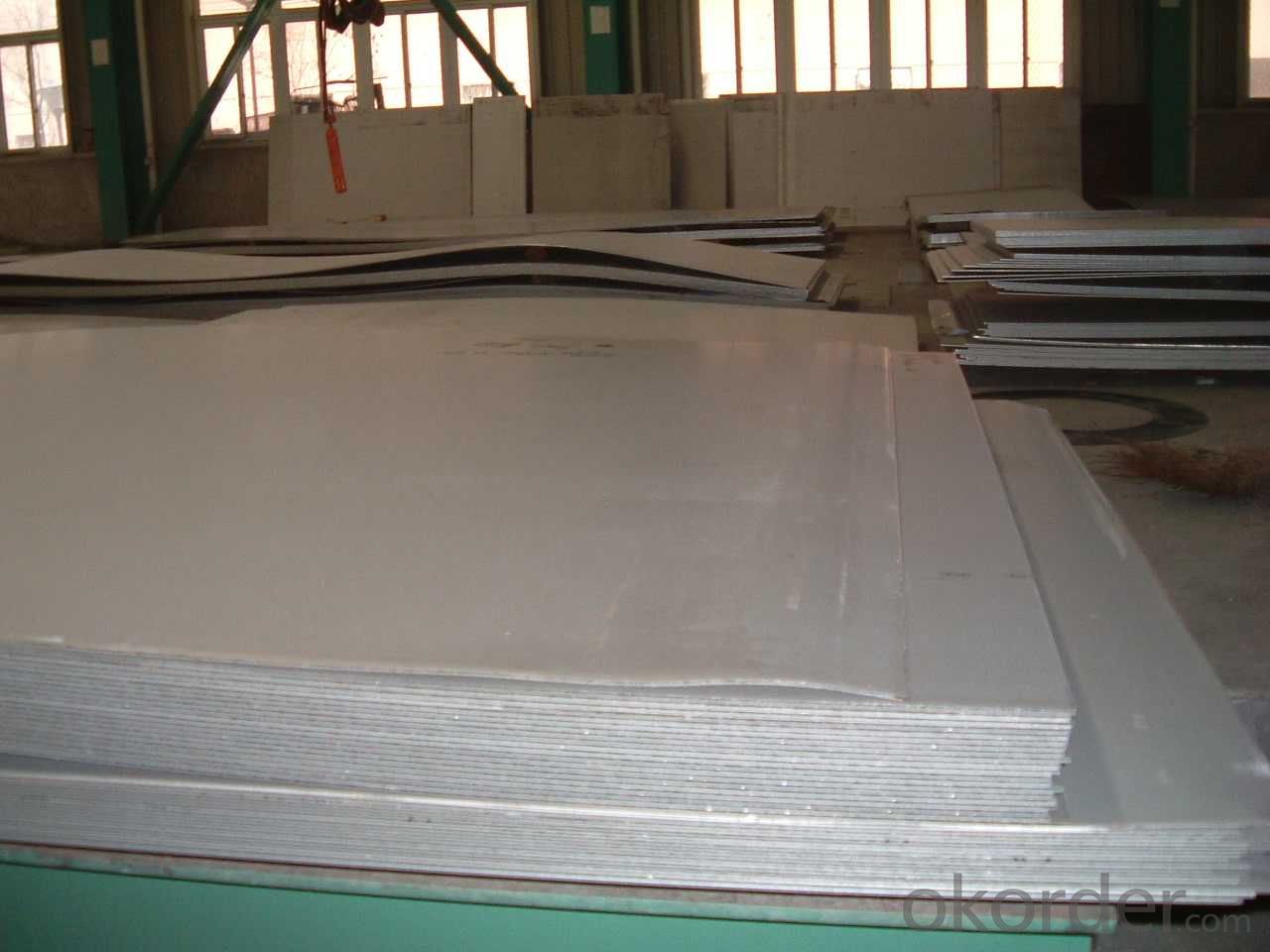
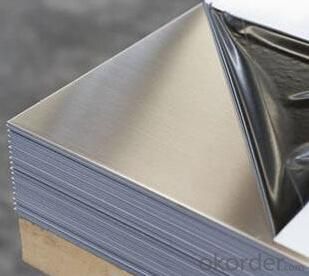
Cold Rolled and Hot Rolled:
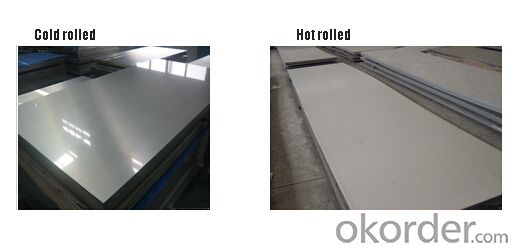
Packing and Loading:
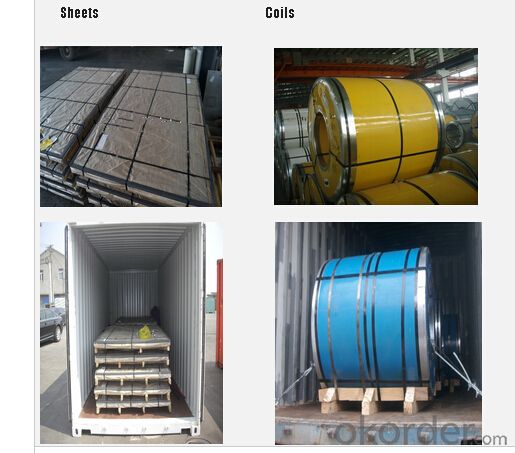
FAQ:
1. What's the quality?
Very fine, we have been exported to more than 30 countries.
2. How long get reply?
Usually within 24 hours
If you have any question about stainless steel sheets, do not forget to send the email to us! You will get the competitive Price and have a very good experience about the Buying Process! CNBM International Corporation is always your trustful friend!
- Q: What is the general width range of stainless steel sheet? What are the common widths?
- Standard 3 M2 1220*2440 thickness from 1 to 12. The whole volume is hard to say.
- Q: How do you clean and maintain stainless steel sheets?
- In order to clean and maintain stainless steel sheets, you will require a few basic supplies. These include a microfiber cloth or soft sponge, mild dish soap or a stainless steel cleaner, warm water, and a towel for drying. Begin by rinsing the stainless steel sheet with warm water to eliminate any loose dirt or grime. Next, gently scrub the surface of the stainless steel sheet using a small amount of mild dish soap applied to the microfiber cloth or sponge. It is important to avoid using abrasive materials or harsh chemicals as these can cause scratches or damage to the stainless steel. After cleaning, make sure to thoroughly rinse the sheet with warm water to remove any remaining soap residue. To prevent water spots, use a clean towel to dry the surface. Always remember to dry the stainless steel sheet after cleaning to prevent the formation of water spots or streaks. If there are stubborn stains or fingerprints that cannot be removed with soap and water, you can employ a stainless steel cleaner that is specifically designed for this purpose. Follow the instructions provided with the cleaner and use a soft cloth to apply it to the sheet. To avoid scratching the surface, wipe in the direction of the grain. Rinse thoroughly and dry as mentioned earlier. To maintain the shine and luster of stainless steel sheets, it is important to refrain from using abrasive cleaners, scouring pads, or steel wool as these can harm the surface. Additionally, avoid using cleaners that contain bleach or chlorine as they can cause discoloration. Regularly cleaning the stainless steel sheets is crucial to prevent the buildup of dirt, grease, or other contaminants that can result in corrosion. For most applications, a weekly cleaning routine should be sufficient, although in high-traffic or heavily used areas, more frequent cleaning may be necessary. In conclusion, the process of cleaning and maintaining stainless steel sheets involves gently scrubbing with mild dish soap or a stainless steel cleaner, rinsing with warm water, and ensuring thorough drying. By following these steps and avoiding abrasive materials, your stainless steel sheets will remain clean, shiny, and in optimal condition for years to come.
- Q: What is 3042B stainless steel?
- 304: general model, that is, 18/8 stainless steel. Products such as: corrosion-resistant containers, tableware, furniture, railings, medical equipment. The standard ingredient is 18% chromium plus 8% nickel. Stainless steel that is free of magnetism and can not be altered by heat treatment. GB is 0Cr18Ni9.
- Q: Are stainless steel sheets suitable for automotive body panels?
- Absolutely! Automotive body panels can definitely benefit from the use of stainless steel sheets. This material is widely favored in the automotive industry because of its remarkable ability to resist corrosion and its exceptional durability. It can withstand even the harshest weather conditions, making it perfect for body panels. Moreover, stainless steel sheets provide a sleek and polished look, enhancing the overall aesthetic appeal of the vehicle. Furthermore, stainless steel offers a superior strength-to-weight ratio, resulting in better fuel efficiency and improved vehicle performance. In conclusion, stainless steel sheets are an incredibly reliable and long-lasting choice for automotive body panels.
- Q: Can stainless steel sheets be used for railway infrastructure?
- Yes, stainless steel sheets can be used for railway infrastructure. Stainless steel is known for its durability, corrosion resistance, and strength, making it suitable for various applications in the railway industry. It can be used for railway tracks, bridges, platforms, and other structures that require high strength and long-lasting performance. Additionally, stainless steel's low maintenance requirements and ability to withstand harsh environmental conditions make it an ideal choice for railway infrastructure.
- Q: What are the different types of stainless steel sheet finishes available?
- There are several different types of stainless steel sheet finishes available, each with its own unique characteristics and applications. Some of the most common finishes include: 1. No. 1 Finish: This is the most basic type of stainless steel sheet finish, also known as hot rolled or annealed and pickled finish. It has a rough, dull appearance with a non-reflective surface. It is commonly used in industrial applications where aesthetics are not a primary concern. 2. No. 2B Finish: This is a smooth, semi-reflective finish that is achieved by cold rolling, annealing, and pickling. It has a slightly glossy appearance and is commonly used for applications where a moderate level of corrosion resistance is required. 3. No. 4 Finish: This finish is achieved by polishing the stainless steel sheet with a fine abrasive material. It has a brushed appearance with a low gloss finish. It is often used in architectural and decorative applications, such as kitchen appliances, countertops, and elevator panels. 4. No. 8 Finish: Also known as a mirror finish, this is the most reflective stainless steel sheet finish available. It is achieved by polishing the surface with progressively finer grits until a mirror-like finish is achieved. It is commonly used in decorative applications, such as architectural accents, signage, and ornamental pieces. 5. Satin Finish: This finish has a smooth, satin-like appearance with a low to medium gloss level. It is achieved by using a combination of brushing and polishing techniques. It is often used in applications where a balance between aesthetics and functionality is desired, such as kitchen equipment, sanitary appliances, and automotive trim. 6. Bead Blasted Finish: This finish is achieved by blasting the surface of the stainless steel sheet with glass beads at high pressure. It creates a uniform, matte appearance with a subtle texture. It is commonly used in architectural and interior design applications, such as wall panels, elevator doors, and furniture. 7. Embossed Finish: This finish is achieved by imprinting a pattern onto the surface of the stainless steel sheet using a mechanical process. It creates a textured appearance that can range from subtle to dramatic, depending on the pattern. It is often used in decorative applications, such as wall cladding, signage, and decorative panels. These are just a few examples of the different types of stainless steel sheet finishes available. The choice of finish depends on the specific requirements of the application, including aesthetics, corrosion resistance, and functionality.
- Q: Are stainless steel sheets heat-resistant?
- Yes, stainless steel sheets are heat-resistant.
- Q: What is the electrical resistance of stainless steel sheets?
- The electrical resistance of stainless steel sheets can vary depending on factors such as the grade of stainless steel, its thickness, and the temperature at which it is being used. However, in general, stainless steel is considered to have a relatively high electrical resistance compared to other metals.
- Q: How do you prevent discoloration or staining on stainless steel sheets?
- To prevent discoloration or staining on stainless steel sheets, there are several steps you can take: 1. Regular Cleaning: Clean the stainless steel sheets regularly using mild soap or detergent and warm water. Avoid using abrasive cleaners or scrub brushes that can scratch the surface. After cleaning, rinse thoroughly with clean water and dry with a soft cloth to prevent water spots. 2. Avoid Harsh Chemicals: Avoid using harsh chemicals such as bleach, ammonia, or chlorine-based cleaners on stainless steel sheets. These chemicals can cause discoloration or staining. Instead, opt for stainless steel-specific cleaners or natural cleaners like vinegar or lemon juice. 3. Proper Storage: Store stainless steel sheets in a clean and dry environment to avoid exposure to moisture or humidity. Moisture can lead to corrosion or rust, which can cause discoloration. If the sheets are stored outdoors, cover them properly to protect them from rain or snow. 4. Use Protective Coatings: Applying a protective coating or sealant on stainless steel sheets can help prevent discoloration or staining. There are various products available in the market specifically designed for stainless steel protection. Follow the manufacturer's instructions for application and reapplication, if necessary. 5. Avoid Contact with Reactive Metals: Avoid contact between stainless steel sheets and other reactive metals such as iron, copper, or aluminum. When these metals come into contact with stainless steel, a chemical reaction called galvanic corrosion can occur, leading to discoloration and staining. Ensure separation or isolation between stainless steel and reactive metals. 6. Regular Maintenance: Regularly inspect the stainless steel sheets for any signs of discoloration, staining, or damage. Address any issues promptly to prevent further deterioration. If you notice any stubborn stains, use a non-abrasive stainless steel cleaner and a soft cloth to gently rub the affected area in the direction of the grain. By following these preventive measures, you can maintain the appearance and integrity of stainless steel sheets, ensuring they remain free from discoloration or staining for an extended period.
- Q: Can stainless steel sheets be used for elevator interiors?
- Yes, stainless steel sheets can be used for elevator interiors. Stainless steel is a popular choice for elevator interiors due to its durability, sleek appearance, and resistance to corrosion and wear. It provides a clean and modern look, making it a suitable material for elevators in commercial buildings, hotels, and other high-traffic areas.
Send your message to us
Stainless Steel Sheet 4x8 with No.4 Surface Treatment
- Loading Port:
- Shanghai
- Payment Terms:
- TT OR LC
- Min Order Qty:
- 500 m.t.
- Supply Capability:
- 5000000 m.t./month
OKorder Service Pledge
OKorder Financial Service
Similar products
Hot products
Hot Searches
Related keywords
